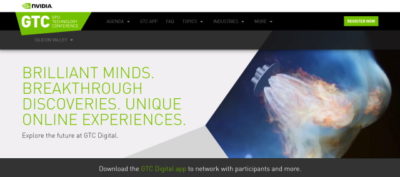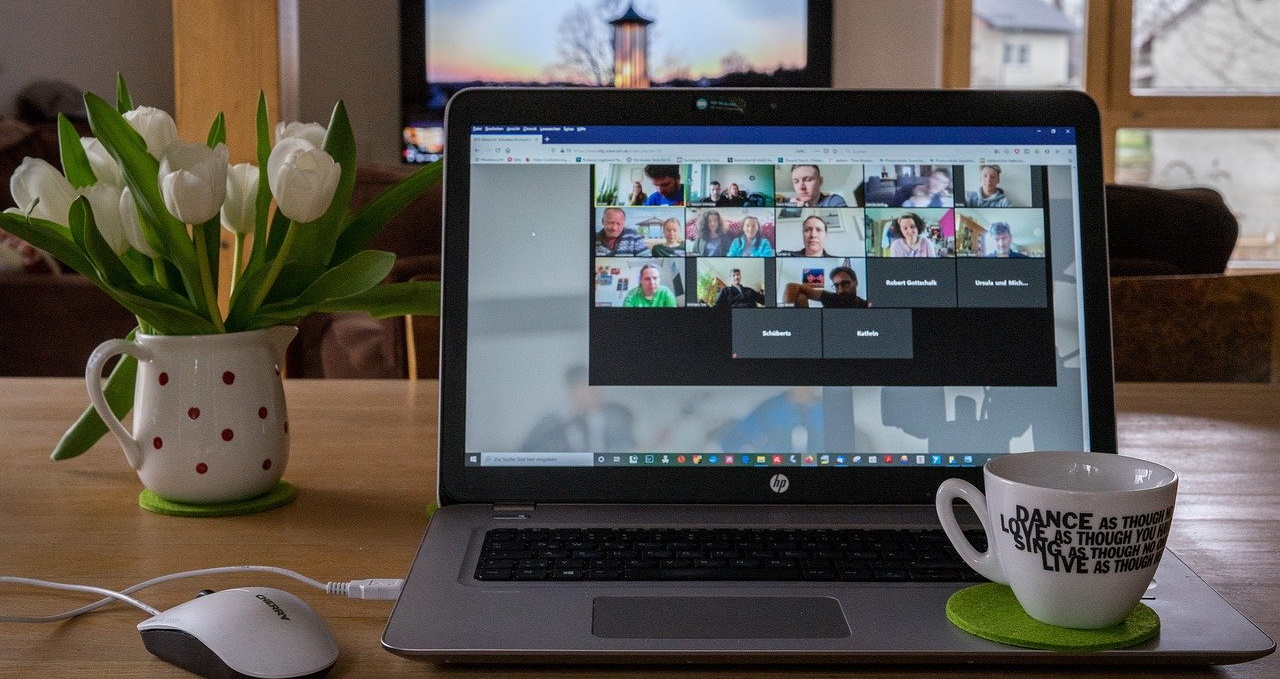There isn’t anyone in the world, right now, who isn’t going to come out of 2020 without a story to share about the global pandemic.
We’ve got a story to share, too, along with some hard-won lessons about what works, and what doesn’t, in our new socially distanced reality as we shifted our GPU Technology Conference online.
For most of a year we aimed to draw 10,000 attendees to the San Jose Convention Center in late March for GTC. It’s been NVIDIA’s flagship event since 1,500 people gathered for the first conference in 2009.
Over those 11 years, we had created 40 events worldwide. So we were in sight of a target we knew how to hit, in ordinary times.
In the last days of February, with COVID-19 spreading worldwide, the company made the call: Cancel the physical event, create the best possible version of it online and call it GTC Digital.
Time to improvise.
My team had never created a fully digital event at anything close to this scale. We didn’t know what tools we’d need. We had no idea how partners and attendees geared up for a physical event would respond. And we certainly didn’t know that soon we would all be working remotely.
That’s when we learned our first lesson: people with the skills to put an event together offline can succeed online, too. Registrations grew to more than 4x our original goal. By April 3, the online event attracted more than 80,000 views. Attendees logged in from nearly every corner of the planet.
The second lesson: if you’re going to ask people to improvise, you need to keep it simple. When the decision to go digital came down, the GTC team made three big decisions to hit those targets — with just three weeks to scramble — while working from home and taking care of kids locked out of schools amid a global healthcare crisis:
- Don’t look back: We chose to unwind the physical conference entirely. We issued cancellations to every supplier and gave full refunds to every attendee and sponsor. It would be a clean break.
- Leverage what you have: We looked for platforms and skills we had in place to support a virtual event with a broad, global audience.
- Communicate the plan: We alerted all 1,300 speakers, asking if they’d still participate.
It was a recipe for more than a few sleepless nights.
“I cried, I won’t lie,” said Jasmin Dave, who has led operations, sales and marketing for all 40 GTC events around the world over the past decade.
“You put your heart and soul into working on an event for an entire year or even more. When it ends without coming to life as a sold-out show floor with amazing demos and record attendance, it’s hard,” she said.
A Tough Deadline Can Be a Blessing
That first Monday morning in March, 50 people crammed into a conference room, some sitting on the floor, with dozens more on the phone. All had the same question: What’s GTC Digital?
For starters, there wouldn’t be a show floor, but there would be plenty of content. Several hundred talks, tutorials, panels and hands-on training sessions would be transformed into live online events, podcasts and on-demand recordings of talks with slides.
In some ways, keeping to the event’s deadline was a blessing. “Speakers already scheduled time to create and give talks, so 80 percent got on board for the online event,” said Christina Hicks, who heads up content for GTC. “Ultimately, more than 800 speakers agreed to record and share their talks — we were absolutely thrilled.”
Lessons in Online Economics
We made an early choice that GTC Digital would be free. We weren’t sure how many presenters would participate. And with most of the world sheltering at home, online learning from world-class experts seemed like an ideal distraction and a way to build community.
In hindsight, free had its costs. For live events with limited capacity, a nominal fee could have prevented overbooking and minimized drop-offs.
We invested the time it takes to deliver a quality experience. As it turned out, the online event required an even larger time investment than the physical one.
The team published a guide for recording talks using tools presenters would have at hand or could easily download. The weekend before the event opened, the team edited and processed 150 videos.
Some of the videos were top notch, one used a green screen. Some benefited from digital polish applied by our A/V crew to silence barking dogs and enhance muffled audio.
An existing GTC On Demand service for storing and sharing videos after live events was repurposed for hosting almost all parts of GTC Digital.
Virtual Events Require Real Infrastructure
Some parts were painful, like connecting all of the different platforms into one central session catalog tied to the user’s registration status. With just two weeks, staff had to manually enter some registration data, work we ordinarily would have automated.
It was one of several unexpected hurdles the team encountered.
The first week of GTC Digital, internet access rubbernecked in an all-day traffic jam of a world working from home. The team had to find backups for speakers and staff in the event they lost their connections.
Service providers felt the surge in demand, one requested a heads-up on sessions that might exceed 2,000 attendees. It was critical to stay in close contact with them and to have alternatives in place.
Live events online require more people and tools than physical events where you can see what’s going on. We used Slack as a real-time back channel with speakers in case anything went awry. NVIDIA’s IT department stepped up, offering to create backups for live sessions in case a primary platform failed.
Working Virtually Doesn’t Make Anything Friction Free
Some things that are assumed for physical events don’t work for global online audiences, like set lunch breaks.
In hindsight, it didn’t make sense to display the local time of the team in Silicon Valley for live events. The session catalog should calculate and display these in an attendee’s local time.
And we discovered that attendees preferred interacting through the desktop catalog rather than the mobile app.

Some of the biggest challenges were non-technical.
Working from home in a time of crisis made collaboration an order of magnitude harder.
Chance hallway encounters that often resolved problems in the office were now gone. In their place, kids needed to be home-schooled, fed, put to bed and hugged.
A note to global employees from our CEO made it clear: “Prioritize your family. Our work will wait. Let your colleagues know. They will rise to support you.”
They did.
Don’t Be Afraid to Ask for Help
Early on, we took a close inventory of the tools we had at hand. And people stepped up to help across the company and beyond it.
A two-person team proficient with an external service used for NVIDIA’s webinars could leverage it to serve up GTC Digital sessions.
Another duo that produces the company’s AI Podcast offered to host panels and interviews with key speakers.
NVIDIA’s Deep Learning Institute (DLI) was in early testing with Kaltura’s Newrow software for hosting live online events. It supports a feature we wanted — breakout rooms for attendees to get one-on-one help from instructors — but now our timetable was extraordinarily tight.
“The team scrambled to pull in the rollout of the platform by six weeks,” said Will Ramey, who oversees the DLI.
Kaltura stepped up, getting dozens of DLI instructors on Newrow and responding rapidly to attendees when they had issues during online sessions. The platform also turned out to be a good fit for “Connect with the Experts” sessions that give attendees one-on-one time with NVIDIA’s engineers.
With virtual classrooms ready, we asked partners for help ensuring attendees the best experience possible. Microsoft Azure provided access to GPU servers so DLI attendees worldwide could get hands-on training in deep learning.
Through it all, the GTC team took time to celebrate accomplishments of the day with wine toasts over Webex.
GTC Digital is still ongoing. New content arrives each Thursday through April 23.
So far, the numbers are solid. As of this week, the event had:
- 45,000+ registered attendees
- 300+ recorded talks
- 148 research posters
- 86 hours of DLI instructor-led training
- 21 webinars
- 39 Connect with the Experts live Q&A sessions
- 9 demos
- 6 podcasts
Tens of thousands have attended live sessions or downloaded on-demand content, nearly 60 percent of them from outside North America. Almost all of the DLI training and “Connect with the Experts” sessions were sold out.
The team is still sorting through feedback. Anecdotally, a partner said, “we should all be taking notes on how NVIDIA is doing this.”
One speaker offered the team thanks “for finding grounds to organize the event even in the midst of the times we’re facing!”
In sessions I attended, people expressed gratitude for something positive they could do while sheltering at home.
Some said they got the professional development they had made time for on their calendars, but didn’t expect during the pandemic. Students who couldn’t afford to travel to Silicon Valley thanked us for the virtual experience.
“It was the right thing to do,” said Dave. “Our theme of keeping it simple and executing well paid off.”
Looking forward, the company believes it may be on to something. With the surprising success of our online experience and some important lessons learned, we’ll be ready to create more digital events. There’s little doubt that’s the trend we’ll be seeing in the near future.
